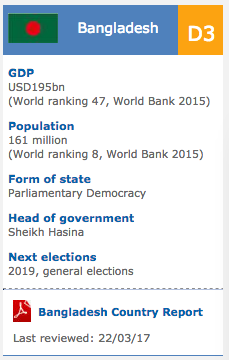Norway: Norway Agriculture Profile 2012
2012/03/22
Norway Agriculture Profile 2012
Norway literally has a sea of opportunities The rich resources of its fjords and seas have played an important part in the economies of Norway's coastal regions and, if they are to be maintained for the future, it is important to exploit them in a way that both safeguards marine diversity and results in the desired value creation. Various important and profitable activities are linked to the sea, including fish farming, biotechnology, high quality products, and logistics. Norway is a high-cost country, and will continue to be so for the foreseeable future. Accordingly, more expertise must be built into the processes and products that Norway develops, to secure higher prices.
Norway's coastline, including its islands and fjords, stretches some 57 000 kilometres. By comparison, the earth's circumference at the equator is 40 000 kilometres. Norway's long coastline and seas provide it with catches of between 2.5 and 3 million tonnes of fish per year. There is little potential for increasing catches in the short term. There are about 10 000 registered fishing vessels in Norway, of which 1 000 are in year-round operation. About 800 facilities are engaged in catch-based aquaculture and the reception and processing of wild fish.
Norway is Europe's largest supplier of fish and fish products. In the course of the last 10 years, the landed export value has doubled to over NOK 30 billion. Ninety-five per cent of what is produced is exported, in the form of over 2 000 different products, to around 150 countries. The industry employs about 30 000 people, of whom 14 000 work in fishing, 6 000 in fish farming, and 10 000 in processing. There are about 800 reception and processing facilities, and about 500 certified exporters, who represent the sales side of the industry.
About 600 000 tonnes of farmed fish and shellfish are produced annually in Norway, and production is increasing. Production is carried on along the whole of Norway's coast. About 1 300 concessions have been issued for fish farming, and about 800 of these are for farming salmon and trout. There are around 100 slaughter/packing facilities, and a significant feed industry has been developed. New farmed species are constantly being introduced to commercial production. Norway is a world leader in farmed species like Atlantic cod, Atlantic halibut and spotted wolf-fish.
Norwegian seafood has an extremely good reputation all over the world. Spring cod is probably the most well-known fish after farmed Norwegian salmon. It is caught in the ice-cold waters off the coast of Northern Norway, and has become a very popular ingredient with famous chefs around the world. It was one of the ingredients for the Bocuse d'Or in 2003. Norwegian king crab and farmed Norwegian white halibut have been selected as official seafoods for the Bocuse d'Or in February 2007. Other popular fish and shellfish species include herring, mackerel, many types of whitefish, prawns, and crabs. Norway's fisheries are operated on a sustainable basis, with a very modern fishing fleet and knowledge-based resource management. Norwegian seafood is safe to eat, and is an excellent source of easily digestible protein, vitamins, minerals, and essential fatty acids.
There are over 2 000 different Norwegian seafood products, including fresh fish, frozen fish fillets, smoked fish, dried and salted fish (klippfish), fish burgers, and other processed forms (such as breaded, tinned and marinated fish). Norwegian farmed fish is also widely used in international cuisine, including in Japan's quality-conscious sushi industry. The sushi and sushimi culinary tradition is spreading globally, enjoying annual growth of 15 per cent.
- Norway News
-
- AFGHANISTAN: UNWTO: International tourism – strongest half-year results since 2010
- ALBANIA: US LNG exports make European market more competitive
- NORWAY: Rwanda, Norway Seek Closer Ties
- AFGHANISTAN: Higher earning Why a university degree is worth more in some countries than others
- ANGOLA: Norway’s Statoil sells stake in oil block in Angola
- NORWAY: Norway uses money from its ’rainy day’ fund
- Trending Articles
-
- CHINA: Chinese-supported infrastructure projects change Zambia's landscape
- KENYA: Kenya to hold fresh presidential election on October 17
- TANZANIA: Gas - Women Yet to Benefit From National Cake Tanzania
- BAHRAIN: Diversification efforts propel non-oil sector, which now accounts for more than 80% of GDP
- CZECH: Investors spooked by Property Regulations in Africa
- CANADA: Lower prices and increased productivity








